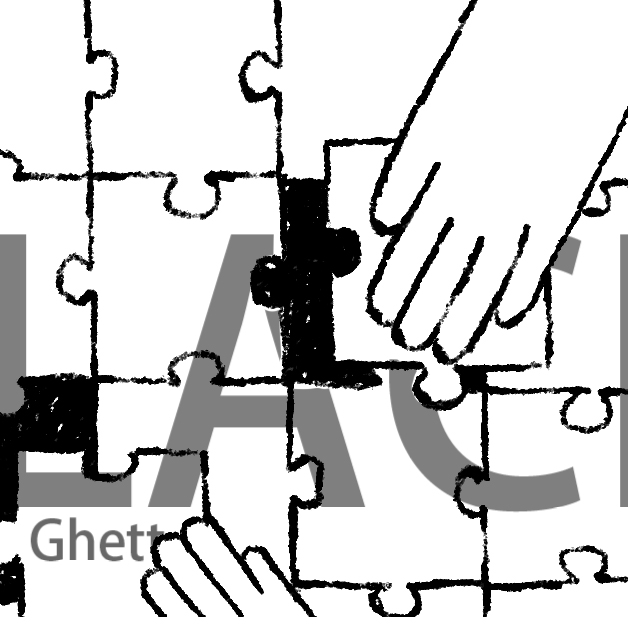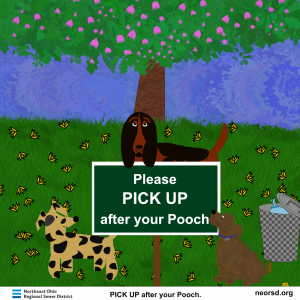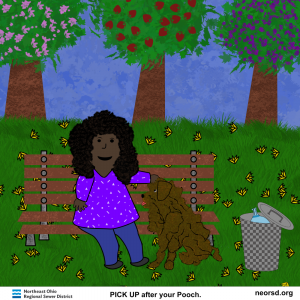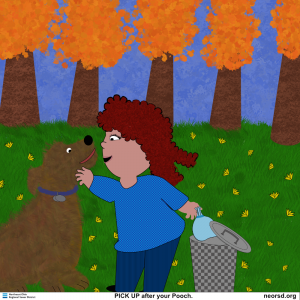Language is a fundamental mechanism of society. Communication allows people to interact with each other and express beliefs, opinions, and ideas. Human advancements have only been made possible through language. Society influences language, and language influences society. For better or for worse, the words people speak have the power to shape and persuade an audience’s cognition. With the popularity of and accessibility to an influx of media, the concept of learning seems simple. But a person may never know that the information they consume may be biased. Bias infiltrates language. Bias is passed down with language, in labels and descriptions. Language expressing prejudice damages the livelihoods of those being targeted. In a historical, American lens, one group of people in particular have been harmed by discriminatory language: Black Americans.
The evolution of the English language allows communicators to utilize specific word choices that reflect stereotypic expectations and beliefs. These linguistic decisions influence preexisting ideologies in both sender and receiver. Although not all language is explicitly prejudiced, even unintentional negative rhetoric sustains discrimination.
The English lexicon contains terms that perpetrate stereotypical beliefs. Terms for the stereotypical expected gender roles such as “family man” and “career woman” only reinforce the idea that devotion to a family is inherent in women but stereotypically unexpected in men. “Family woman” and “career man” do not exist as colloquial terms because a doting woman and a career-focused man already exist as a stereotypically obvious fact. A communicator may express prejudice through language by creating a narrow subtype. For example, if someone says, “He is a nice Ethiopian” or “He’s nice for an Ethiopian,” it perpetuates the belief that most Ethiopians are not nice. That person is marking what they feel to be unexpected, therefore relegating information to a restrictive category.

Bias may be shown by providing relatively more reasoning for the communicator’s perception of unexpected results. In a 2003 social psychological experiment, white participants were given a simple phrase, and they had to expand on that sentence. Those sentences included positive, negative, and neutral attributes, one of which included, “Marcellus got a position at Microsoft.” Many white participants attempted to rely on situational explanations for stereotype-inconsistent behavior of Black people: “Marcellus got a position at Microsoft because he knew someone there.” Any success that Black people face is likely met with biased people justifying the success with unnecessary information discrediting the work that they complete to achieve accomplishment. After 12-year-old Tamir Rice was murdered by the Cleveland police in 2014, much discussion of the blame circulated around the neglectfulness of his mother. A Cleveland news outlet posted an article titled: “Lawyer representing Tamir Rice’s family defended boy’s mom in drug trafficking case.” His mother’s previous drug charge was absolutely irrelevant to the investigation. The article cites a child psychologist, who explains that children exposed to criminal activity may be confused as to how to react to law enforcement. The article incriminates Tamir. By questioning the integrity of her role as a mother, the blame is shifted away from the white police officer who shot Rice. The perpetual criminalization of Black people is dangerous, since many white police officers overstep boundaries and abuse their powers in an attempt to verify that their profile of a criminal matches a Black person.
Negations are also a common linguistic phenomenon that may reflect bias, especially in describing behavior that is inconsistent with the communicator’s beliefs. If a speaker believes that all Black students are stupid, yet a Black student expresses intellectual behavior that contradicts that expectancy, the speaker is likely to employ a negation: “The Black student is not stupid.” With this statement, a receiver is able to deduce the speaker’s prior expectancy that the Black student should have exhibited unintelligent behavior. Negations also make subconscious associations with the negated notion. Instead of saying, “The Black student is smart,” the speaker links the words “Black student” and “stupid” together. The other problem with negations is that they deliver technically correct information in a much more neutral form rather than a positive form. Stereotypical views still persist even when stereotype-inconsistent behavior is described. Speakers who are looking to persuade an audience or gain sympathies are likely to use negations often. With the knowledge that negations weaken the description, a person may strategically use a negation: “You are not smart.” This statement essentially holds the same meaning as, “You are stupid,” but it gives the speaker a polite tone and diminishes the offensiveness of the sentence.
Linguistic bias, especially with unaware communicators and audiences, contributes to the continuation of stereotypes. The cognition of a recipient of a biased message is influenced by, and the inferences the recipient makes align with, the sender’s stereotypical expectations. Bias may be formed in different ways depending on the context. When common ground is lacking between two people, the sender may apply linguistic tactics to convince the receiver about stereotypic expectations in order to establish a similar viewpoint. The strongest signs of linguistic bias, however, are usually in communication between a sender and receiver that shares a view about a target. The language reflects bias expectancies, and both sender and receiver will confirm and strengthen their stereotypical beliefs.

One of the most powerful words that has barred the living conditions for the Black population is “ghetto.” In a broad, historical context, the term “ghetto” has historically been used to describe parts of cities occupied by members of minority groups. It is an English word with unknown origins: was it derived from the Yiddish word “gehektes,” which means “enclosed,” or did it come from the Italian word “borghetto,” which translates to “little town?” “Ghetto” could have descended from several languages, but generally, its most prominent utilization of the word was to describe the segregation of the Black community. An article published in 1966 wrote, “Something must be done, and done soon, to build a strong and stable family structure among Negro ghetto dwellers.” The people who formed their strongly negative opinions about the ghetto failed to recognize the neglect surrounding the Black communities. African Americans were forced to pay exorbitant prices for housing; naturally, African American homes were more likely to deteriorate and worsen in condition. Several local and state government legislations permitted polluting industries, liquor stores, nightclubs, and houses of prostitution in African American neighborhoods while labelling them as violations in predominately white neighborhoods. As a result of this tendency to portray the Black community in a harmful light, the public correlated slums, the ghettos, with African Americans. The history and the economic struggles of the Black community are erased, and instead, racist stereotypes are reinforced. Ta-Nehisi Coates, author of Between the World and Me (2015), states that “it’s a word that allows you to erase individuals and create boxes.” By consolidating a Black person’s identity to being only from the ghetto, their identity becomes a false misconception of the whole community. In the modern world, “being ghetto” and “ghetto fabulous” are real, socially-common terms that subtly perpetuate fallacious stereotypes. “Being ghetto” refers to low-class behavior, and “ghetto fabulous” indicates shallow allure. Both of these phrases harm the Black community and demonstrate that the term “ghetto” is not about locationality. The word associates poverty with African Americans. But many members of the Black community reclaimed pride in living in ghettos. Rapper Busta Rhymes celebrated his ties to the ghetto, a place “where you find beautiful women and rugrats, and some of the most powerful people, I love that!” He does not denounce or add to the public perception of the ghetto. This word has a contradicting pull between poverty and pride, so the speaker is the most important consideration when determining the connotations of “ghetto.” Some may see it as poor neighborhoods, but it also carries implications of perseverance through limitations.
“Black-on-black crime” is another derogatory phrase, framing the Black community as selectively vocal about violent issues. This flawed argument focuses on the belief that police reformation is prioritized over an ignored epidemic of crime in the Black community. While the term was only coined recently, the underlying conclusion was that Black people had proclivities to commit crimes and therefore are inherently violent, a notion that stretches back to the 19th century. Frederick Ludwig Hoffman, author of Race Traits and Tendencies of the American Negro (1896), encouraged the belief that Black people had a crime problem. The argument that overemphasizes the exceptionality of Black people killing other Black people and it being a problem within the Black community alone is rooted in white supremacist ideals. With this argument, the focus is on the singular person and not the system. Crime is the effect of the socioeconomic system that disproportionately disfavors African Americans: restricting their education, job, and housing opportunities. White people created the cycle of poverty imposed specifically on the Black community to suppress them. “White-on-white crime” is never used as a colloquial phrase, despite around 81% of white victims being killed by white offenders. The problem with the “black-on-black” narrative is that it can be simplified down to the racist belief that there is something inhumane or wrong with African Americans. When people subscribe to this argument, they subscribe to the implicit bias against the Black community.
Words box people into certain stereotypes. Labels of different groups of people, especially racial, cause those members to lose their senses of individuality. Prejudiced language associates negative characteristics with all members of that group. The utilization of derogatory slurs persists from the 1800s. Now, it is not socially acceptable to be overtly racist in most parts of the country, so linguistic prejudice manifests in other, elusive ways. But the themes and characterization remain the same: alienation, ascription of intelligence, and assumption of criminality. Biased terminology inspires action, making it dangerous to exist as a Black person in America for fear of people in power acting on their racist beliefs. In an age of misinformation, it is important to navigate the world and communicate with others with a careful awareness that words matter.
Bibliography
- Abel, Elizabeth. “American Graffiti: The Social Life of Segregation Signs.” African American Review (St. Louis University) 42, no. 1 (Spring 2008): 9-24. https://www.jstor.org/stable/40301300.
- Beukeboom, Camiel J. “Mechanisms of Linguistic Bias: How Words Reflect and Maintain Stereotypic Expectancies.” In Social Cognition and Communication, by Joseph P. Forgas, 313-30. New York, NY: Psychology Press, 2014.
- Blackwell, Brandon. “Lawyer representing Tamir Rice’s family defended boy’s mom in drug trafficking case.” The Plain Dealer (Cleveland, OH), November 24, 2014. Accessed December 1, 2021. https://www.cleveland.com/metro/2014/11/lawyer_representing_tamir_rice.html.
- Bloomfield, Maxwell. “Dixon’s ‘The Leopard’s Spots’: A Study in Popular Racism.” American Quarterly 16, no. 3 (1964): 387. https://doi.org/10.2307/2710931.
- Brown, Penelope, and Stephen C. Levinson. Politeness: Some Universals in Language Usage. 1987 ed. Cambridge: Cambridge Univ. Press, 1994.
- Carnaghi, Andrea, Anne Maass, Sara Gresta, Mauro Bianchi, Mara Cadinu, and Luciano Arcuri. “Nomina Sunt Omina: On the Inductive Potential of Nouns and Adjectives in Person Perception.” Journal of Personality and Social Psychology 94, no. 5 (May 2008): 839-59. https://doi.org/10.1037/0022-3514.94.5.839.
- Collins, Katherine A., and Richard Clément. “Language and Prejudice.” Journal of Language and Social Psychology 31, no. 4 (May 10, 2012): 376-96. https://doi.org/10.1177/0261927X12446611.
- Lumen. “3.4 Language, Society, and Culture.” Lumen Learning Communication Studies. Accessed December 1, 2021. https://courses.lumenlearning.com/atd-pima-communication/chapter/3-4-language-society-and-culture/.
- Lyman, Brian. “‘There will be lynchings’: How the Advertiser failed victims of racial terror.” Montgomery Advertiser (Montgomery, AL), April 20, 2018. Accessed December 1, 2021. https://www.montgomeryadvertiser.com/story/news/2018/04/20/there-lynchings-how-advertiser-failed-victims-racial-terror-eji-peace-justice-memorial-montgomery/499656002/.
- Maass, Anne, Roberta Ceccarelli, and Samantha Rudin. “Linguistic Intergroup Bias: Evidence for In-group-protective Motivation.” Journal of Personality and Social Psychology 71, no. 3 (1996): 512-26. https://doi.org/10.1037/0022-3514.71.3.512.
- Pilgrim, David. “The Tom Caricature.” Jim Crow Museum of Racist Memorabilia. Last modified December 2000. Accessed December 1, 2021. https://www.ferris.edu/HTMLS/news/jimcrow/tom/homepage.htm.
- Rothstein, Richard. The Color of Law: A Forgotten History of How Our Government Segregated America. New York: Liveright Publishing Corporation, a division of W.W. Norton & Company, 2018.























